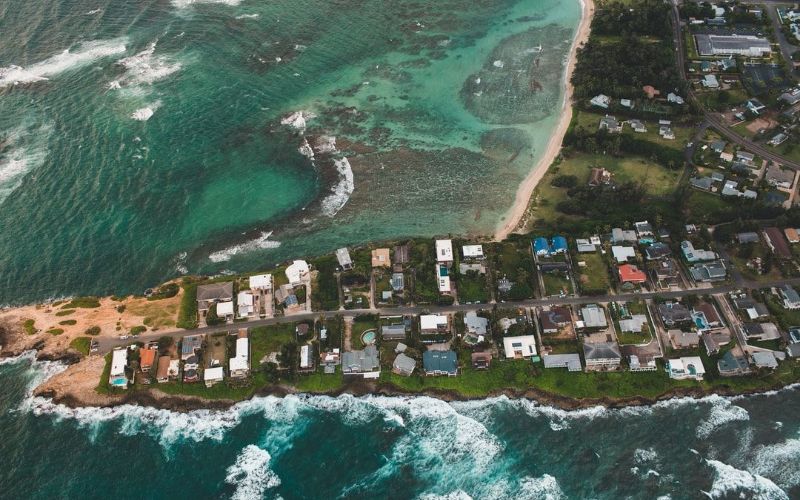Author

Rosaria Indah
rosariaindah@usk.ac.id
Head of Research and Cooperation at Pusat Riset Ilmu Sosial Budaya (Research Center for Social and Cultural Studies), Universitas Syiah Kuala, Banda Aceh, Indonesia
The number of disasters happening each year is increasing. In the 1970s, there were approximately 100 natural disasters reported annually. Recently, the numbers are tripled to be more than 300 incidences. Many researchers were interested in researching the impact of disasters in their attempts to prevent and mitigate those disasters and increase the resilience of the affected populations. However, researching in those dynamic areas requires adequate preparation in order to handle potential problems related to the specific conditions in the field. This article draws on several experiences during ethnographic research in medical education at a post-tsunami and conflict area in Aceh, Indonesia. From these experiences, there are three recommendations toward the preparatory phase before researchers immersing themselves in disaster-affected areas: developing contingency plans, increasing competencies on engaging vulnerable participants, and preventing secondary trauma stress (STS).
Develop adequate contingency plans
In order to stay safe until the project complete, researchers who work in disaster-prone areas must establish a plan to ensure the safety of the work and the people involved. These plans are sets of procedures to reduce risks related to human wellbeing, which are known by different names, such as safety protocol, policy, or guidelines, depending on the levels of recommendations on their implementation. However, researchers need to develop contingency plans based on several experiences, which are more comprehensive compared to safety protocols. A contingency plan provides an evacuation plan wherever the researchers are, including a meeting point with family members and colleagues if natural disasters happen. It also analyzes the likelihood that each disaster might occur, the type of each disaster, capacity and vulnerabilities of the researcher, potential supports, and other factors influencing the evacuation time. ( i.e., people’s behavior around the researcher, including their familiarity with evacuation routes, herding tendency, and compliance with the rules). I benefited from the contingency plan for an earthquake and tsunami that I have already tested several times before conducting my field research. My participants and I were saved from a big quake that caused significant disruptions. We were saved when the tsunami early warning system was activated. A chaotic evacuation process triggered traffic accidents due to people’s efforts to save their lives or search for their family members.
Navigating participants with strong negative emotions
When research involves disaster-affected people, the researcher(s) need to be aware that they may situate the participants at risk of experiencing strong negative emotions due to re-experiencing traumatic events. Most participants have the power to maintain a solid emotional and mental health state throughout the interview. They have a suitable coping mechanism and can consider that the advantage obtained from the research will compensate for the mental pressure that might happen during the work. However, some people may refuse to answer questions in order to avoid re-experiencing traumas (e.g., horrific memories, nightmares, flashbacks, and other uncontrolled reactivity to traumatic stimuli). Avoidance is one of the main coping mechanisms toward trauma and might be one of the symptoms of depression, anxiety, or PTSD. In that situation, researchers need to show understanding and be mindful of the timing of their research, wait until the dead are buried, the participants have proper housing, or relief agencies or insurance companies support them. Researchers need to facilitate the participants to have psychological support to assist the participant in raising traumatic responses. Other strategies including developing a proper sequence of interview questions. For example, the questions that might elicit emotional distress and are more challenging to answer should be located at the near end of the interview) and utilizing a stress debriefing session in order to alleviate some symptoms of stress on participants. In any interactions, researchers need to apply good communication approaches. Among those approaches, there are ‘CARE’ communication principles, which incorporate ‘Comfort, Acceptance, Responsiveness and Empathy.’ Moreover, the World Health Organization published a guideline for aid workers that offers a useful framework for researchers working in disaster contexts.
Researcher’s self-care
Researchers involving themselves with people suffering from psychological trauma, either listening to their stories of caring for their needs, might develop Secondary Trauma Stress (STS). STS is a natural, consequent behavior or emotion resulting from knowledge about traumatizing experiences by a significant other. It is a syndrome that may affect researchers involved with disaster survivors. The symptoms of STS include the feeling that others’ trauma is researcher’s, which is accompanied by excessive fear and startled reactions, sleeping disorders, and physical symptoms such as a racing heart, sweating hands, and shortness of breath. Those symptoms are similar to PTSD; the difference is on the source of trauma. PTSD person was exposed primarily to the trauma, and STS person was exposed secondarily by listening to or caring for a traumatized person.
A study in Australia reported that 81.6 percent of researchers in post-wildfire research admitted having one or more STS symptoms, ranging from sadness, emotional numbness, the trouble of sleeping and concentrating, especially if they shared the same trauma. In order to prevent and overcome problems related to STS, self-care protocols are crucial, including: ‘healthy protocol’ consisting of diet, exercise, stress management, and adequate deep sleep. Persons with suicidal thoughts need additional efforts, which include risk factor identification and a phone support list. For persons with suicidal attempts, there is a need to apply ‘the self-harm protocol,’ which includes removing all sharp and potentially harmful objects, ongoing self-evaluation, and more.
Implementing the above recommendations is vital to prevent problems that may be encountered when researching disaster-prone areas. After the fieldwork, reflecting on experiences provides a way of learning and producing new knowledge that might be needed to overcome new problems in the future.
